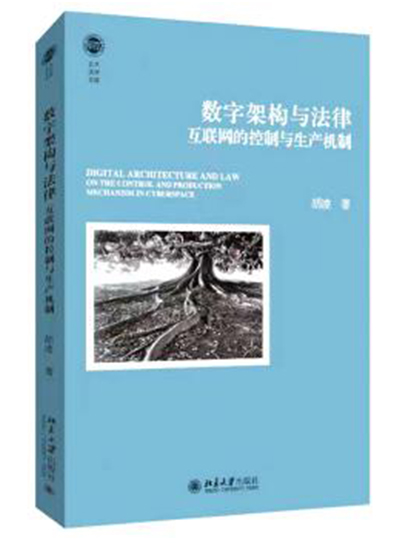A legal metaphor of internet ‘architecture’

Digital Architecture and Law on the Control and Production Mechanism in Cyberspace
When jurists encounter technological objects, they typically reference articles of law or legal principles to transform these objects into a legal object, and then deduce the corresponding legal relationships and regulatory pathways. This is the norm in legal practice and is generally reasonable and effective. However, Hu Ling, an associate professor from the Peking University Law School and the author of the newly published Digital Architecture and Law on the Control and Production Mechanism in Cyberspace, argues that legalists should not be concerned solely with individual technologies, such as data, algorithms, artificial intelligence, and platforms, conceiving of them as isolated and closed entities and ignoring the complex technological systems, political and economic relations, and production organization processes to which they are subject. Readers familiar with jurisprudence will quickly recognize the pragmatic undertones in this perspective.
Hu’s theoretical formula also includes Lawrence Lessig’s sociology of law and Marx’s political economy. Lessig’s theory, labeled “code is law,” and Marx’s principle that “the base determines the superstructure” both suggest that law is not the sole or decisive means of social control. Lessig uses “code” and “architecture” interchangeably; in a technological or vertical sense, architecture refers to the bottom-up layering of internet protocols. In the social or horizontal sense, Lessig describes “architecture, the market, social norms, and laws” as the four types of regulatory forces.
Hu follows Lessig’s concept of architecture and theoretical perspective. However, in Hu’s view, Lessig mainly focuses on regulability, that is, who will regulate, whom to regulate, how to regulate, and what norms to enforce in cyberspace. Lessig does not sufficiently explain why network architecture is able to function as a productive force that continuously motivates the update and reconstruction of legal rules, social norms, and business models. Hu’s architecture theory is actually a synthesis of Lessig’s regulatory architecture and Marx’s productive architecture.
Architecture represents the core concept of the book, but it is no more a “thingness” than the internet; it is merely a metaphor. The study of cyber law is never short of metaphors. Lessig’s “code,” Yochai Benkler’s “peer production,” Jonathan Zittrain’s “generativity,” and Zuo Yilu’s “medium” serve as explanatory metaphors. Hu’s architecture is no exception. This metaphor offers a highly inclusive theoretical framework that incorporates Lessig’s four elements and Marx’s economic foundation and superstructure. In doing so, jurists can free themselves from the fetters of the metaphysical technological concept, identifying the role the legal system and legal practitioners should play within the entire internet industry.
Yue Lin is an associate professor from the Law School at Shanghai University.
Edited by YANG LANLAN

 PRINT
PRINT CLOSE
CLOSE